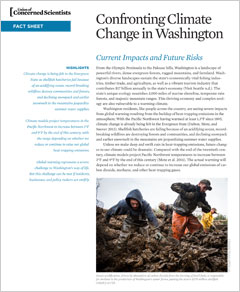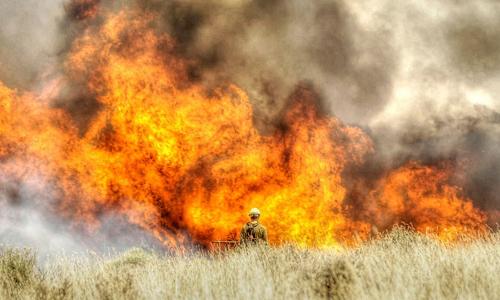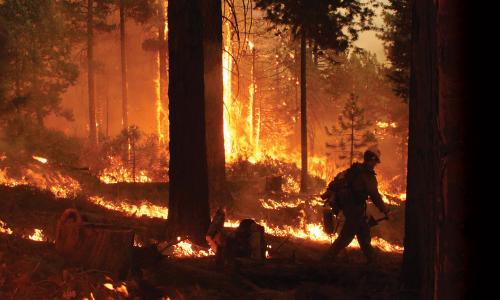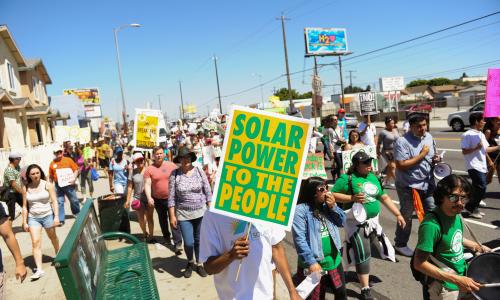Washington residents, like people across the country, are seeing impacts from global warming. With the Pacific Northwest having warmed at least 1.3°F since 1895, climate change is already being felt in the Evergreen State.
Shellfish hatcheries are failing because of an acidifying ocean, record-breaking wildfires are destroying forests and communities, and declining snowpack and earlier snowmelt in the mountains are jeopardizing summer water supplies.
Unless we make deep and swift cuts in heat-trapping emissions, future changes to our climate could be dramatic. Climate models project Pacific Northwest temperatures to increase between 3°F and 9°F by the end of the century compared with the end of the twentieth century.
The actual warming—and the magnitude of its resulting impacts—will depend on whether we reduce or continue to increase our global emissions of carbon dioxide, methane, and other heat-trapping gases.
This fact sheet was originally published in 2015, but was updated and rereleased in August 2018.







